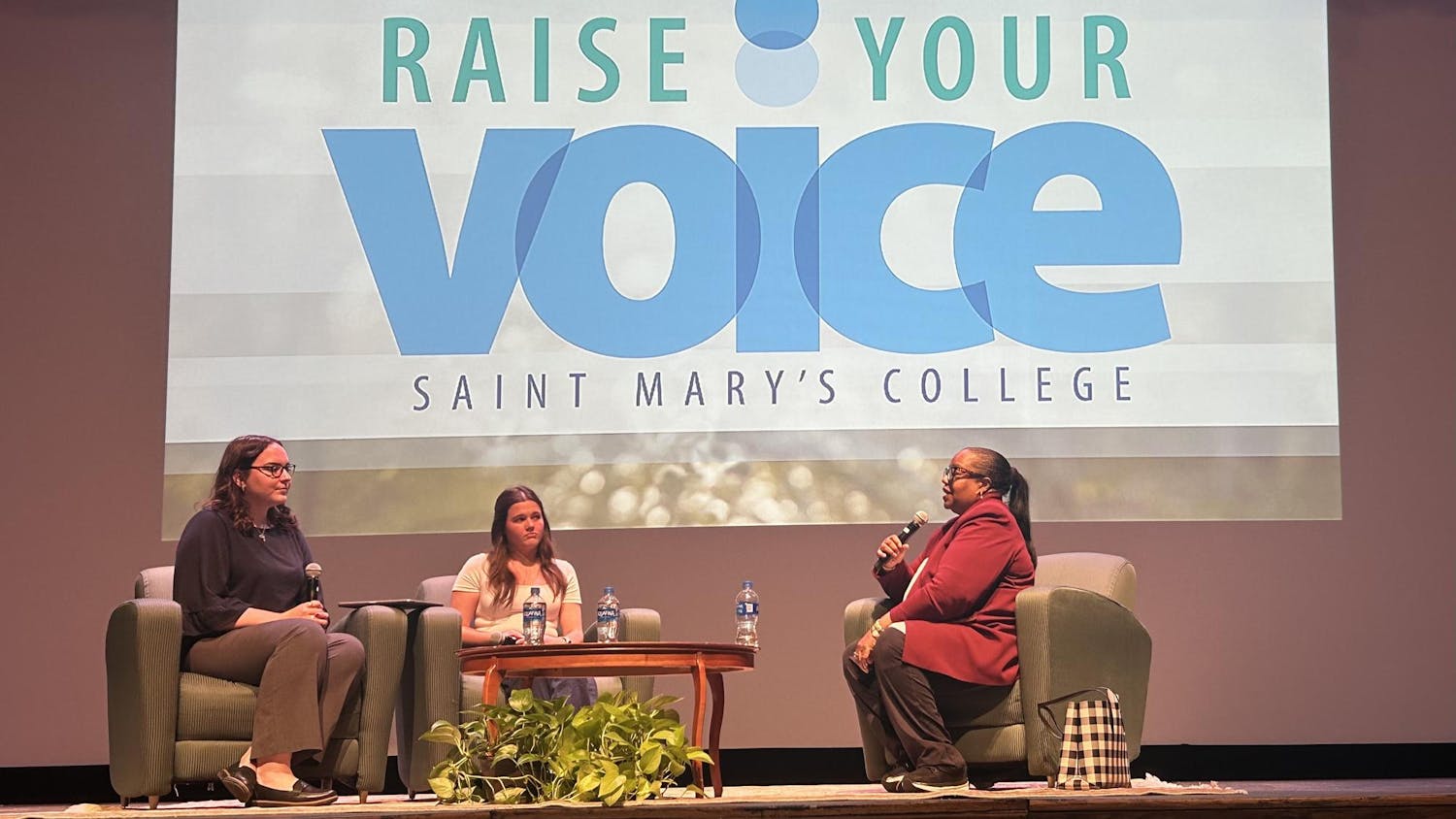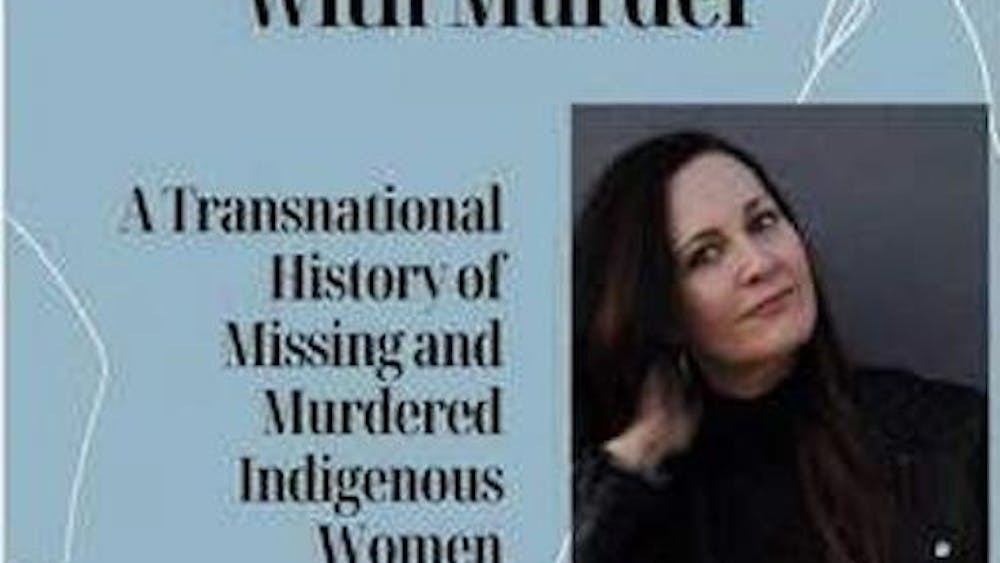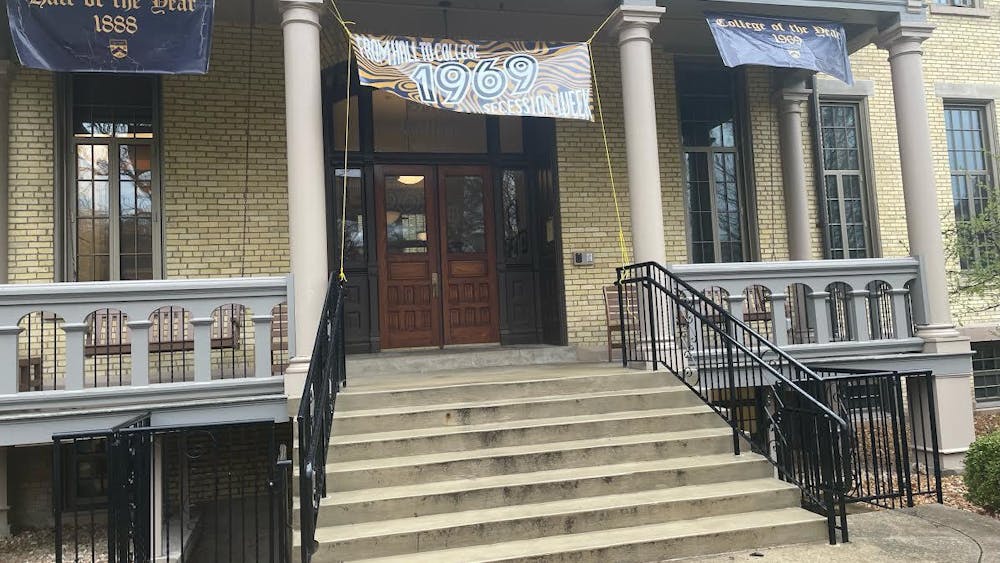After months of designing, two trips to South Africa and a summer of grant applications, a team of Notre Dame graphic design students was awarded a $50,000 grant through the 13th annual Sappi Fine Paper North America Ideas that Matter program for their work to combat xenophobia in South Africa.
A "highly respected program aimed at helping designers create and implement projects for charitable causes," Ideas that Matter announced the 13 grant recipients in its 2012 competition this week, according to Sappi's website.

The Notre Dame team, led by associate professor of design Robert Sedlack and consultant Andrea Pellegrino, submitted a proposal to Sappi this summer for its work in developing together+, an educational initiative aimed at alleviating xenophobia in the Kgosi neighborhood of Johannesburg.
"This grant takes the project from a theoretical level to practical implementation and seeing the results of that," Paul Horn, director of community outreach initiatives for the KgosiNeighbourhood Foundation, said. "What's really exciting is because of where I sit in the Catholic school network, this project has a major chance to influence thousands and thousands of schoolchildren and really make a difference in society."
Sedlack said the $50,000 grant primarily will be used to produce and distribute the project's educational materials, but the sum only covers about a third of the funding needed to complete the entire project. He said Pellegrino would continue to assist the project in finding additional sources of funding through grants, donations and corporate sponsorships.
Horn, Pellegrino and senior Brandon Keelean collaborated over the summer to write the grant proposal. The project's selection as a grant recipient stands out because Sappi generally funds projects proposed by professional designers over students, Pellegrino said. (Editor's Note: Keelean is The Observer's graphics editor.)
"The grant absolutely validates the work we're doing," Pellegrino said. "If we walk into a corporation asking for funding, the fact that we already have the grant validates what we've done so far."
The concept for together+ materialized in April 2011 when Horn, then-director of communications for the Center for Social Concerns (CSC), approached Sedlack and Pellegrino about the issue of xenophobia in Kgosi.

"There was a critical need in the refugee community for some outside agency to try to address the problem of xenophobia, and I thought it would be a perfect fit for design and communication," Horn said. "I knew both Andrea and Robert had a strong interest in and belief that design could effect social change and be used for social good."
After speaking to Horn and listening to research presented by Pat McCormick and Graham Thomas, both members of the Class of 2012 and former participants in the CSC's International Summer Service Learning program, Sedlack and his students began to develop the materials for the together+ project, which consists of four student-generated projects that aim to inform the Kgosi community about issues related to xenophobia: a refugee rights booklet, a healthcare rights booklet, a children's book and a community mural project.
"The students did a really wonderful job generating a wide variety of ideas that could manifest themselves in some way or another to address the issues," Sedlack said.
During fall break last year, Sedlack and Pellegrino traveled to South Africa to conduct some research of their own, which was followed by a spring break research trip that included seven of Sedlack's design students.
"We had the amazing experience of watching students get wrapped up in [the project] after doing research on how to develop an educational and promotional campaign to help alleviate xenophobic issues in this community in Johannesburg," Pellegrino said.
"[The trip] wasn't a deep immersion, but it was enough to really see it," Sedlack said. "It was a powerful opportunity for the students to come face-to-face with these issues. It's one thing to read about it or see it on a computer screen or hear about it from someone else, but when you're sitting in a room ... where eight people live and talking to people who have been affected by such horrible atrocities, it's a totally different thing than reading about it in a classroom in South Bend."
Senior Lynn Yeom said her spring break experience changed her perspective on the potential impact of the project.
"Our initial intent for all the projects ... was more about planting the seed within the community so they can develop solutions themselves by changing their thoughts about foreigners and refugees," Yeom said. "After going [to South Africa], we really thought that would be possible with the right tools and the right audience of young kids."
The together+ team is also collaborating with the Alliance for Catholic Education to develop the children's book into an interactive curriculum project that will potentially expand its use to sixth graders and high school juniors, Yeom said.
Pellegrino, Sedlack and Yeom said the success of together+ in moving into the production phase is somewhat unusual.
"Often, projects initiated by graphic design kids are really innovative ... but don't get far into production because they don't get feedback or exposure," Yeom said. "But the fact that we got the grant is a firm cheer from other people that these projects are feasible and it's possible to change people's perspectives and solve problems by giving people solutions to progress from."
Some of the project's original student collaborators have graduated, but Pellegrino said that hasn't stopped them from remaining involved in the project.
"The thing that's so unique about Robert's approach, the project and its student involvement is that students who have graduated are still feeding into the project, and going and actually meeting people affected by xenophobia in South Africa is a big part of that," Pellegrino said.
Although all the students originally involved with together+ will have graduated at the end of this year, Pellegrino said Sedlack would hand the project over to the next crop of students by integrating some juniors into the group in the spring.
"This is a long-term project. Xenophobia won't disappear next year because of what we do, but the idea affects people of different ages," Sedlack said.
But the heart of the together+ project lies in its foundation in Notre Dame's mission, Sedlack said.
"This is the kind of project that our Notre Dame design program pursues, that social model for design," he said. "A lot of programs around the country teach classes in that, but it's part of the fiber of our being at Notre Dame. We have students who want to affect positive social change, and this class and our program generally allow for opportunities like that."












